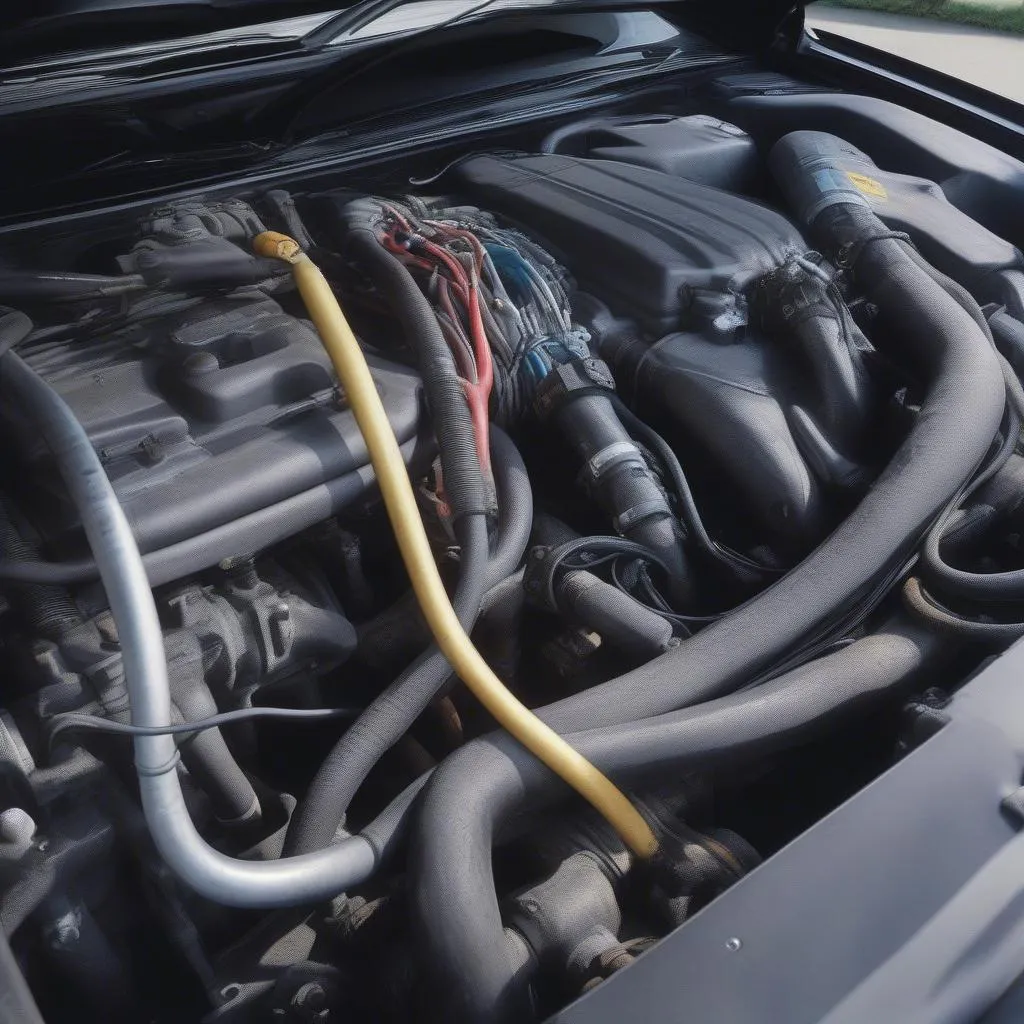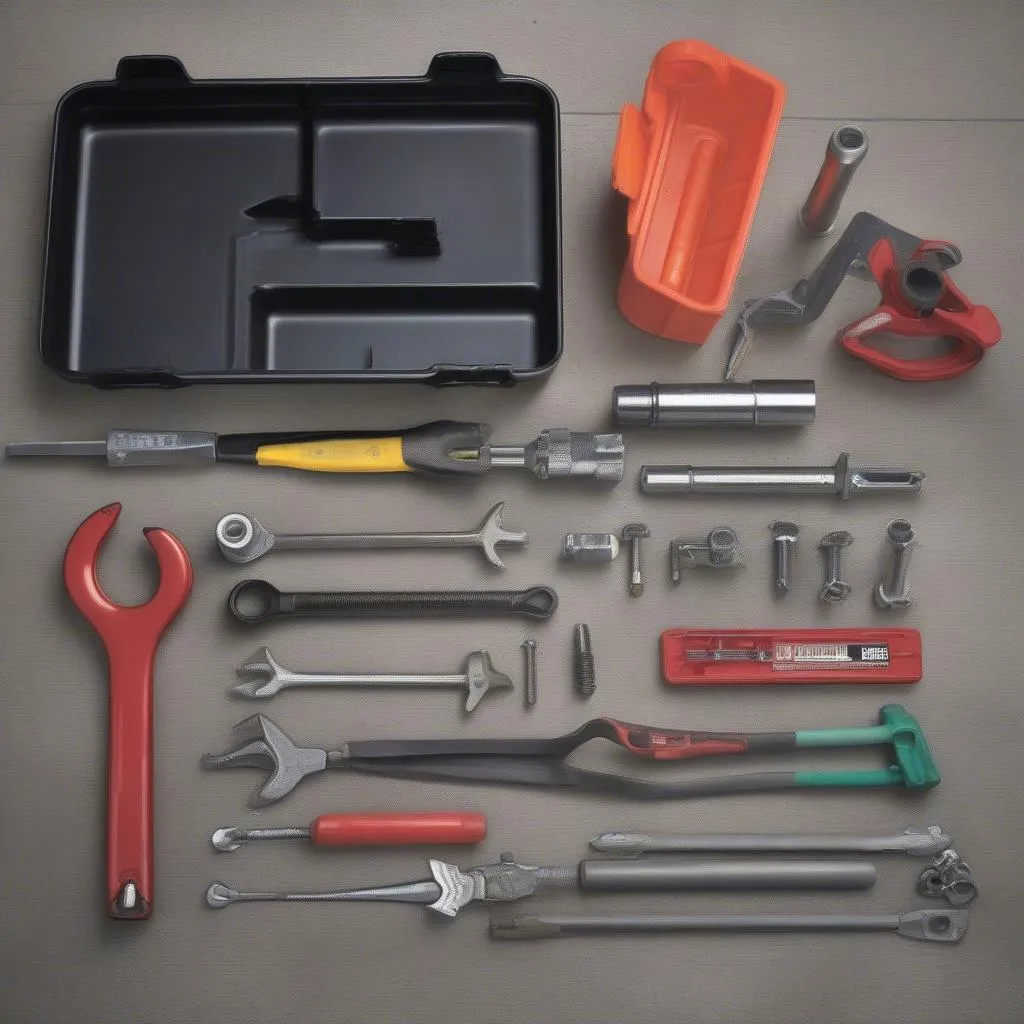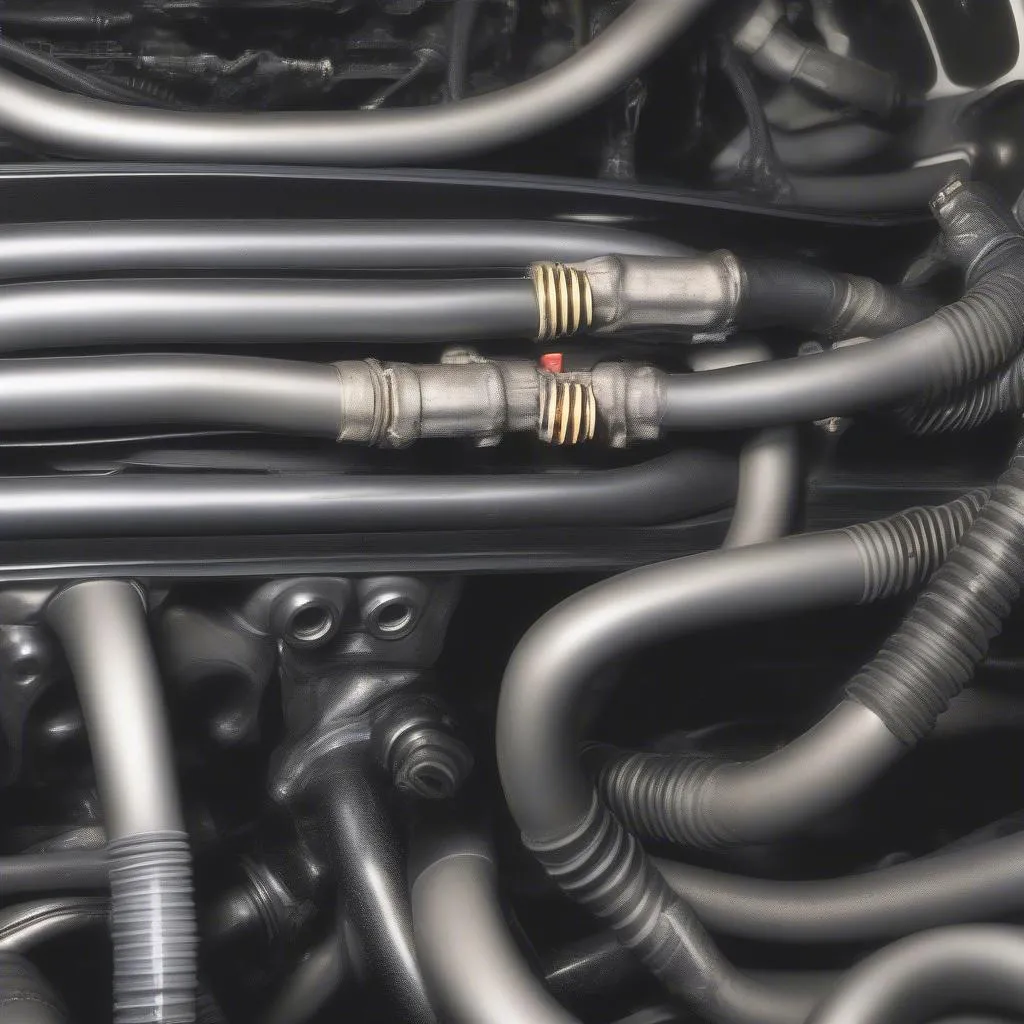Is your 2004 Mercedes Benz C240 acting up with jerky shifting, slipping gears, or a check engine light? These are all too familiar symptoms of transmission line problems. This comprehensive guide will delve into the intricacies of this common issue, providing you with a clear understanding of the causes, symptoms, and potential fixes.
Understanding the Transmission Lines
Your C240’s transmission relies on a complex network of lines and hoses to regulate fluid pressure and ensure smooth gear changes. Over time, these lines can become brittle, crack, or leak, disrupting the delicate balance of fluid pressure and leading to a range of transmission issues.
Common Causes of Transmission Line Problems
- Age and Wear: The most common culprit is simply the age of your vehicle. Over time, exposure to heat, pressure, and road debris takes its toll on the rubber and plastic components of the transmission lines.
- Corrosion: Rust and corrosion can weaken the lines, making them susceptible to leaks and cracks.
- External Damage: Impacts from road debris or accidental damage during repairs can also compromise the integrity of the transmission lines.
Identifying Transmission Line Issues
- Fluid Leaks: One of the most obvious signs of a transmission line problem is a fluid leak under your car. Transmission fluid is typically red and has a sweet odor.
- Slipping Gears: When the transmission doesn’t receive the correct fluid pressure due to a leak or blockage, it can cause the gears to slip while driving.
- Rough Shifting: Leaking or damaged lines can also lead to harsh or delayed gear changes.
- Check Engine Light: Your car’s computer will often detect transmission problems and trigger the check engine light.
 Mercedes C240 Transmission Lines
Mercedes C240 Transmission Lines
Gathering the Tools for the Job
Before you begin any repair work, it’s essential to gather the necessary tools. This will ensure the process goes smoothly and minimizes the risk of further damage.
- Replacement Transmission Lines: Purchase high-quality replacement lines specifically designed for your C240 model.
- Transmission Fluid: You’ll need fresh fluid to refill the system after replacing the lines.
- Basic Hand Tools: Wrenches, sockets, screwdrivers, and pliers are essential for loosening and tightening connections.
- Jack and Jack Stands: Safely lift and support your vehicle for easier access to the undercarriage.
- Drain Pan: Collect the old transmission fluid for proper disposal.
 Car Repair Tools for Transmission Lines
Car Repair Tools for Transmission Lines
Steps to Fix Your Transmission Lines
Note: While this guide provides a general overview, it’s crucial to consult your vehicle’s repair manual or seek professional assistance if you’re uncomfortable with any step.
- Locate the Leak: Carefully inspect all transmission lines for signs of leaks, cracks, or damage. Pay close attention to the connections and clamps.
- Drain the Transmission Fluid: Place the drain pan under the transmission pan and remove the drain plug to drain the old fluid.
- Disconnect the Lines: Using appropriate wrenches, carefully disconnect the damaged lines from the transmission and radiator.
- Install the New Lines: Route the new lines following the same path as the old ones. Ensure the connections are secure and free of leaks.
- Refill the Transmission Fluid: Consult your owner’s manual for the correct fluid type and capacity. Fill the transmission through the dipstick tube.
- Check for Leaks and Test Drive: Start the engine and inspect for leaks. Once confirmed, take your C240 for a test drive to ensure smooth shifting and proper operation.
 Mercedes C240 Transmission Fluid Check
Mercedes C240 Transmission Fluid Check
Frequently Asked Questions
Q: Can I drive my C240 with a transmission line leak?
A: It is strongly advised against driving your vehicle with a transmission leak. Continuing to drive can lead to severe transmission damage, resulting in costly repairs or even replacement.
Q: How much does it cost to replace transmission lines?
A: The cost can vary depending on labor rates and the specific lines needing replacement. On average, expect to spend between $300 and $800 for parts and labor.
Q: Can I use a transmission leak sealant to fix the problem?
A: While stop-leak additives may temporarily seal minor leaks, they are not a long-term solution. It’s crucial to address the root cause of the leak by replacing the damaged lines.
Q: What happens if I put the wrong transmission fluid in my car?
A: Using the incorrect fluid can severely damage your transmission. Always consult your owner’s manual or a trusted mechanic to ensure you’re using the correct fluid type.
Q: Are there any reliable diagnostic tools for identifying transmission issues in a 2004 Mercedes Benz C240, and what are their typical functionalities?
A: Yes, there are several reliable diagnostic tools available, with CARDIAGTECH offering a range of options suitable for varying needs and budgets. These tools can read and clear fault codes, monitor live data streams from the transmission control unit (TCU), and assist in pinpointing the exact location of transmission problems. “According to automotive electronics expert, Dr. Emily Carter, author of ‘Advanced Automotive Diagnostics,’ using a professional-grade scan tool capable of communicating with the Mercedes-specific modules is crucial for accurately diagnosing and resolving transmission issues in these vehicles.”
Conclusion
Addressing transmission line problems promptly is essential for maintaining the health and longevity of your 2004 Mercedes Benz C240. By understanding the causes, recognizing the symptoms, and following the appropriate repair steps or seeking professional help, you can ensure smooth and reliable performance from your vehicle for years to come. Remember, regular maintenance and inspections are key to preventing future transmission issues.


